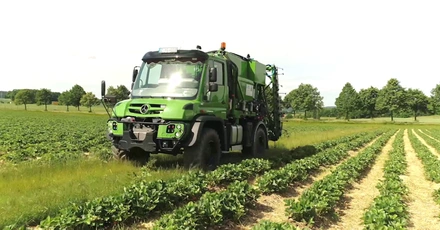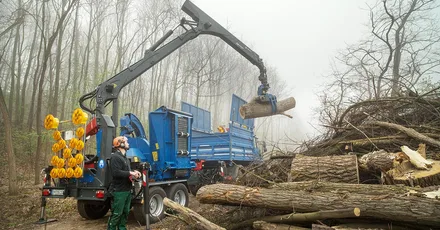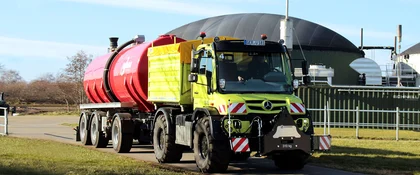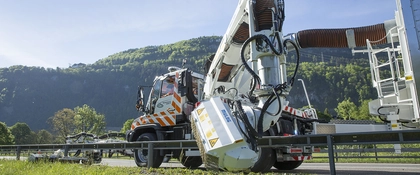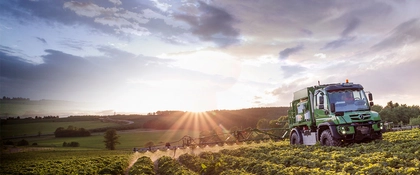Farmer Gerhard Wolf has put his trust in the Unimog for the last 23 years.
Gerhard Wolf runs a farm in Börslingen, near Ulm. A Unimog U 530 and a U 2400 are in daily operation in his farming business. We met up with him on the farm, and spoke to him about his 23 years of experience with the Unimog. Read the interview here.
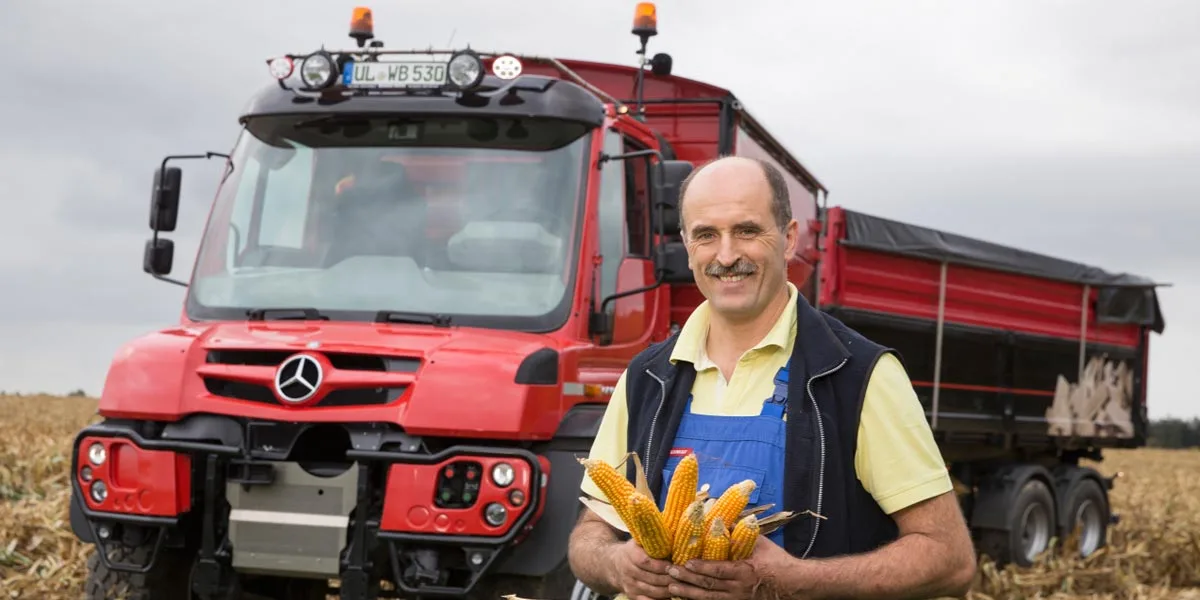
What jobs do you use your Unimog for?
„We use our U 2400 on the fields for tilling, seeding, fertilising and crop spraying,and for grass silage with a trailer. The U 530 is used only for transport assignments. That would include transporting pigs, feed – such as whey, which we fetch two or three times a week direct from the dairy, for transporting grain or silage maize from the fields to the silos or carrying silage from the meadows. The U 530 also carries out all other transport jobs, for example carrying liquid manure in tanks to colleagues, or collecting feed protein from the harbour. We obtain our grain maize from regions that can be up to 50 kilometres from here."
What vehicle bodies do you use?
„We use a tanker body by HLW with a capacity of around 7500 litres, and a tipper body with a capacity of around 12 m3 which was adapted by the Eggers company. When needed, we also use all our available agricultural trailers with the Unimog. We are much more flexible and manoeuvrable without the dolly mechanism of a tractor, and that is particularly important in the network of tracks between fields."
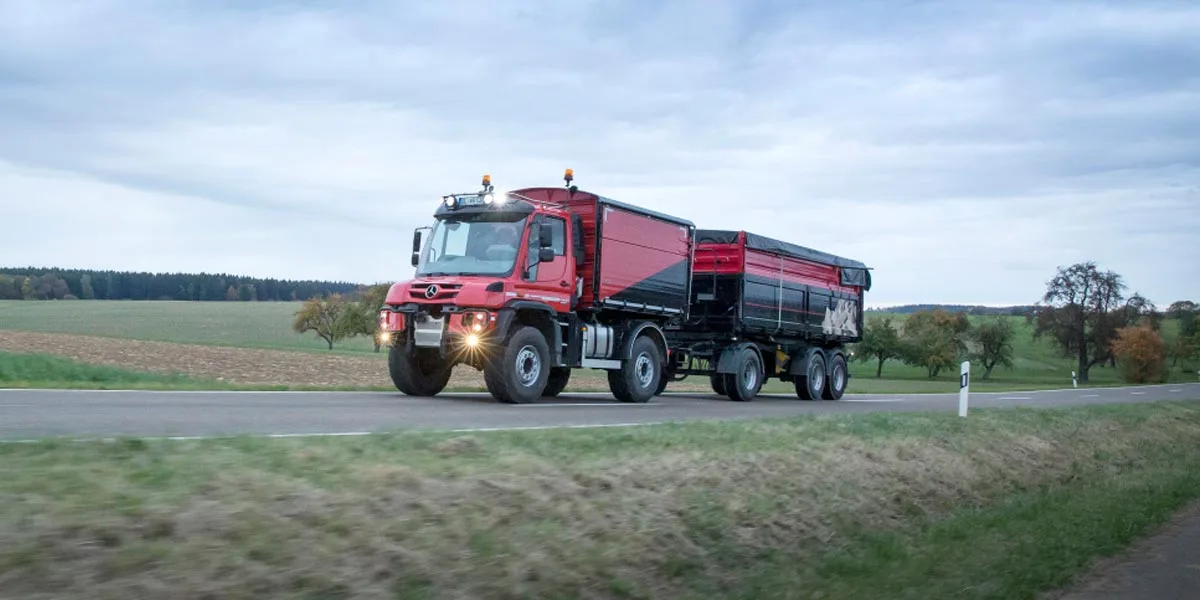
What are the advantages of the Unimog compared with a tractor or a lorry?
"The Unimog is versatile, manoeuvrable, fast, off-roadable and economical, and it can carry payload itself. Bodies are easy to mount, with changeovers possible in a matter of minutes. Being classified as an agriculture/forestry vehicle means the Unimog is not subject to any transport restrictions, so we're not banned from using the roads on Sundays and public holidays. The Unimog can be used on any agricultural tracks, and it has the same advantages as a truck in terms of ride comfort while still being registered as an agricultural/forestry vehicle."
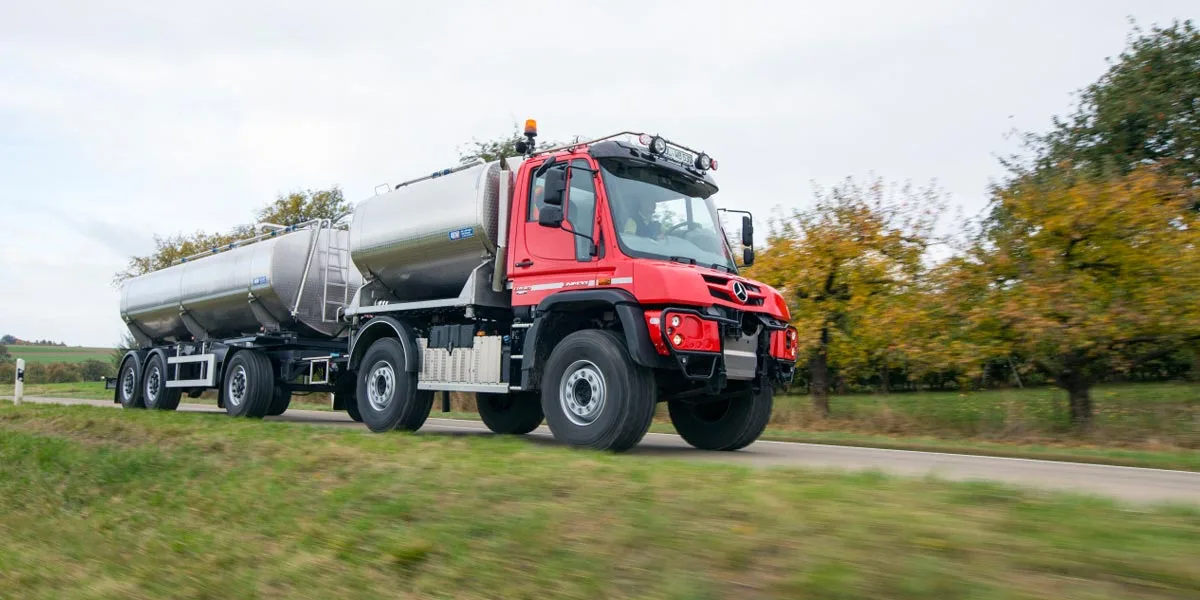
Are there any specific commercial advantages?
"We make use of the toll charge exemption. And the diesel consumption is comparable to that of an all-wheel drive truck, and significantly more economical than a tractor. In my estimation, the fuel consumption of the new U 530 is another 5-10% lower than that of the preceding U 500, giving us an average of under 37 litres per 100 km for all transport operations. The all-wheel drive gives good traction, and tyre wear is amazingly low. We get about 280,000 km out of a set of tyres (with a gross vehicle weight of 40 t most of the time) and they only cost a fraction to replace compared with agricultural tyres for a tractor over 200 hp."
